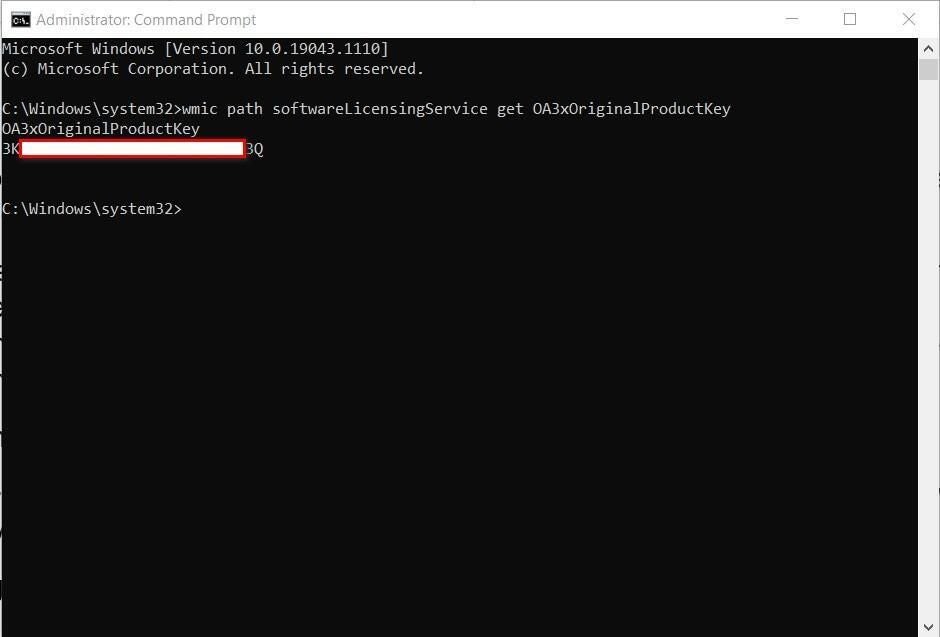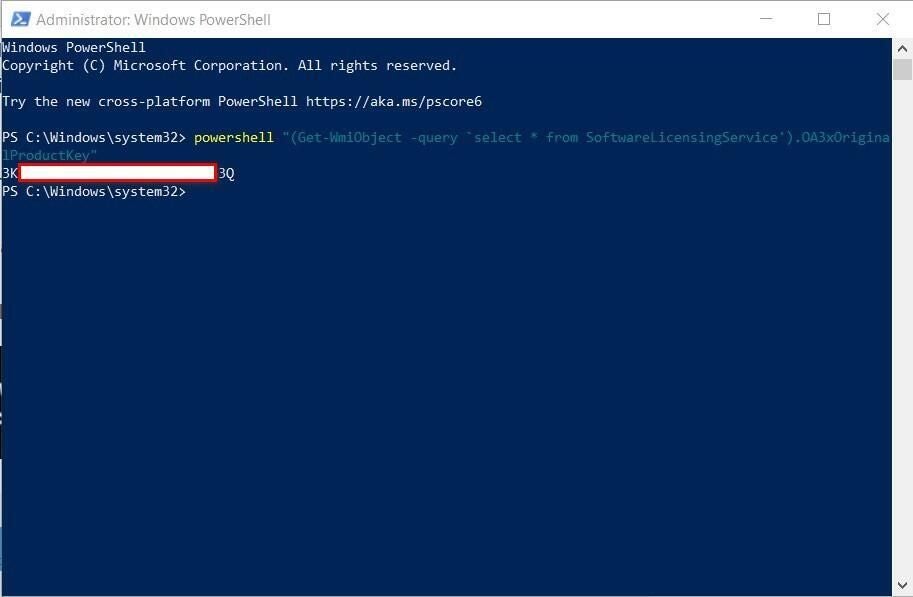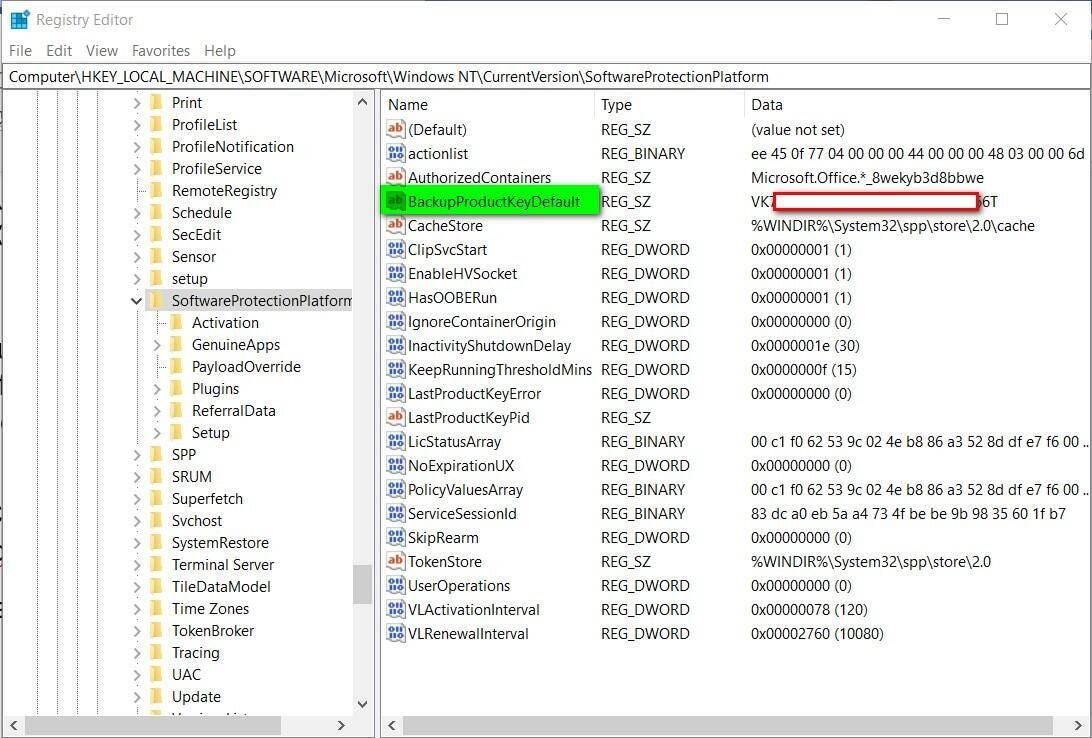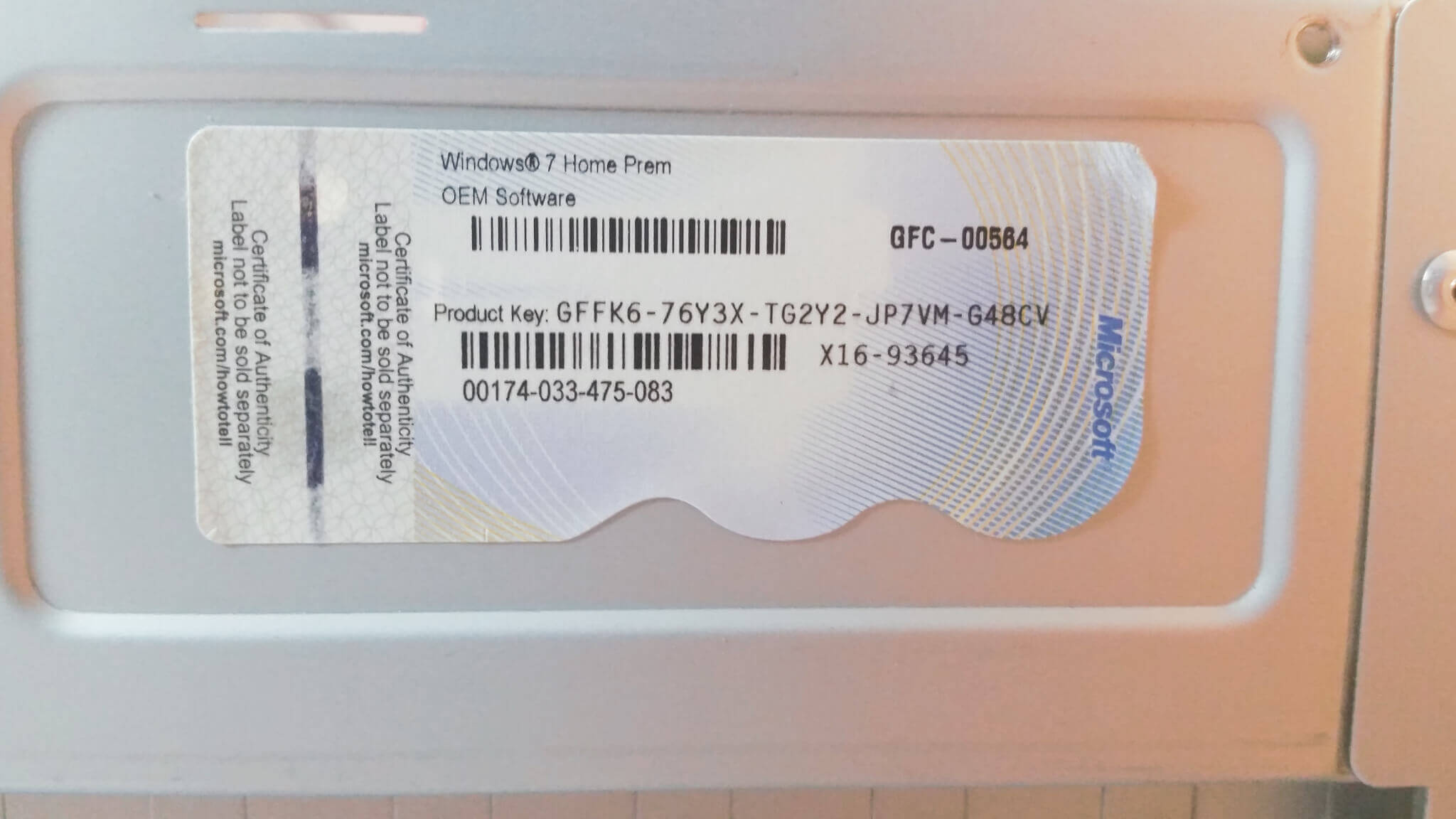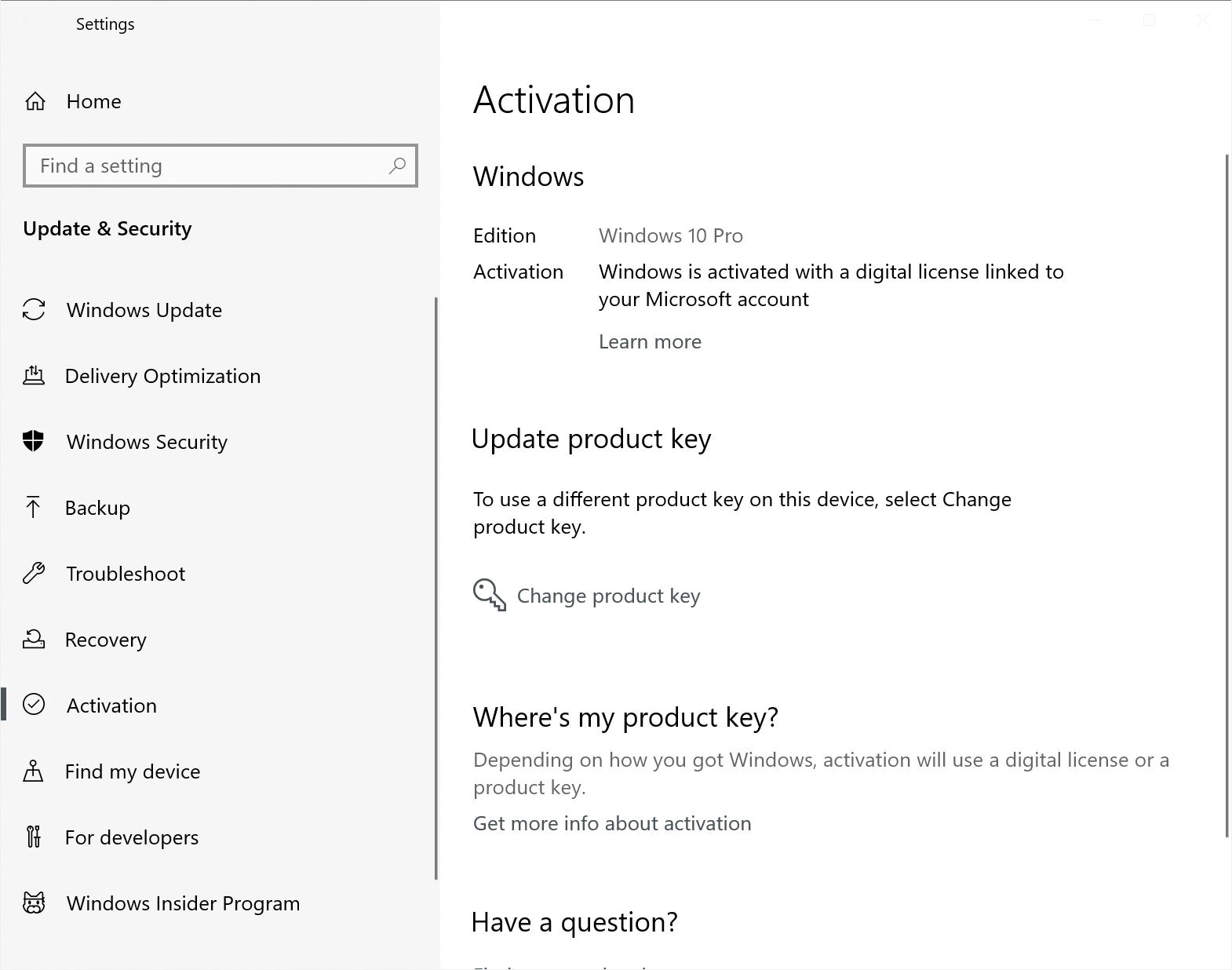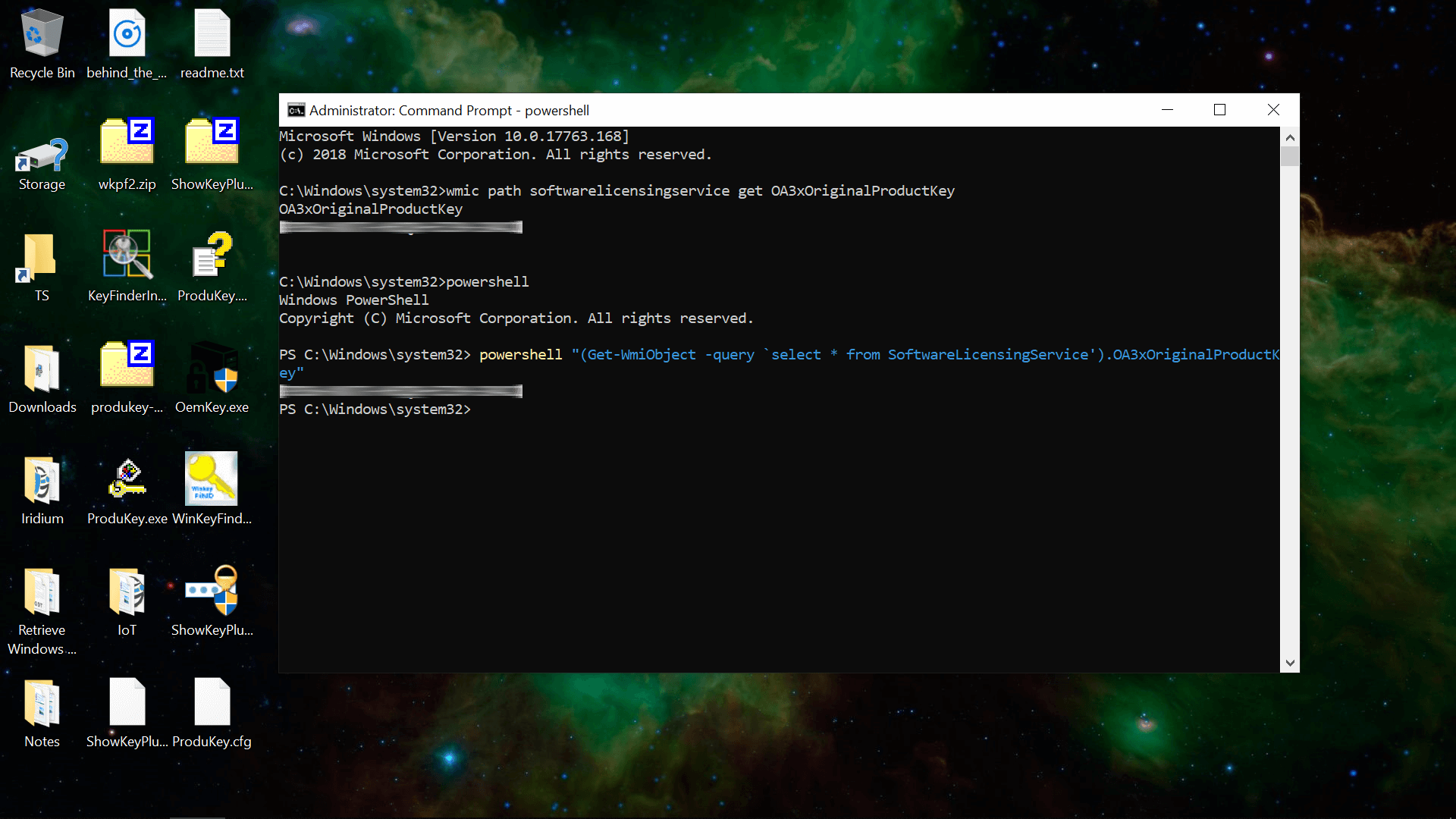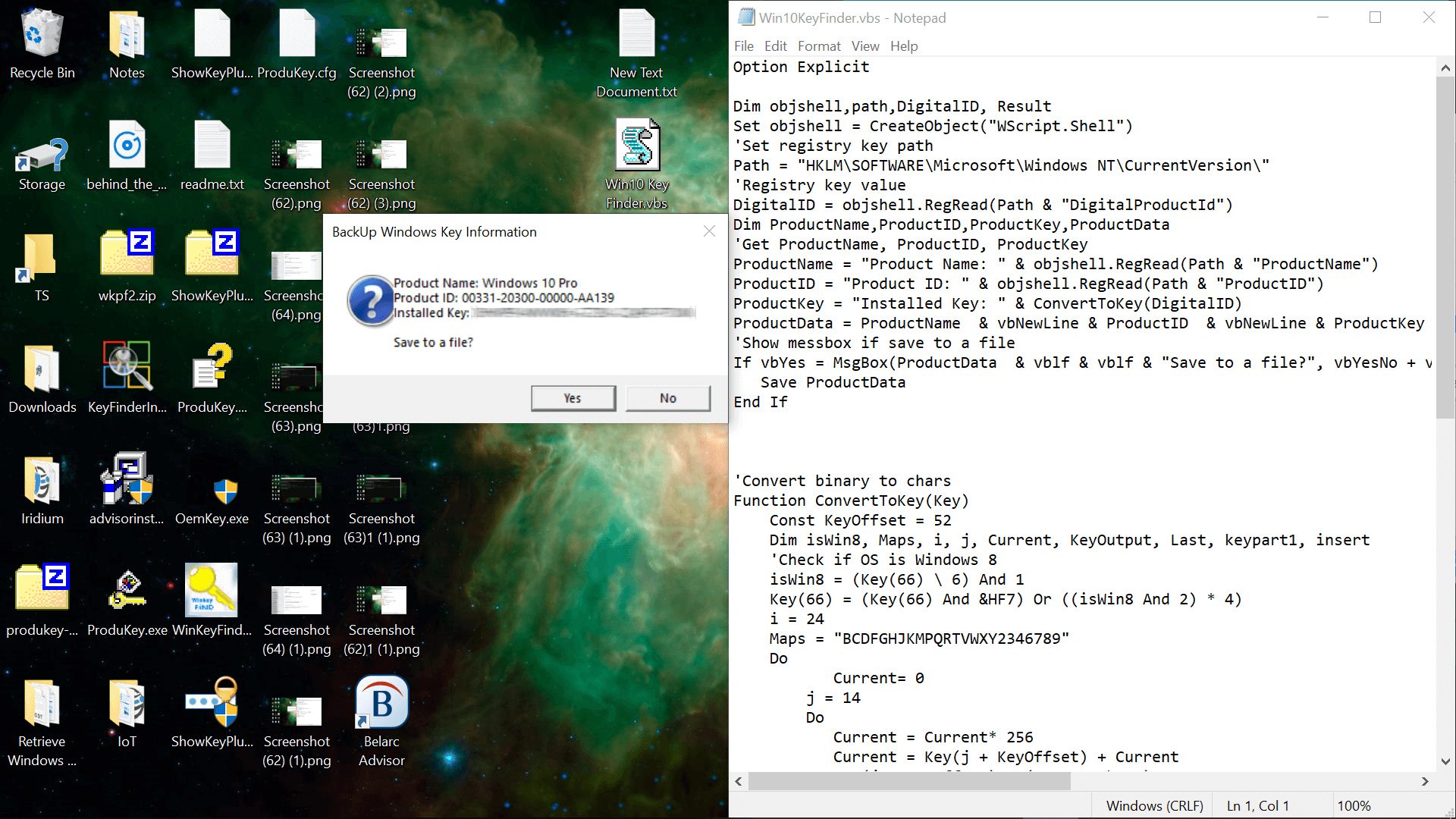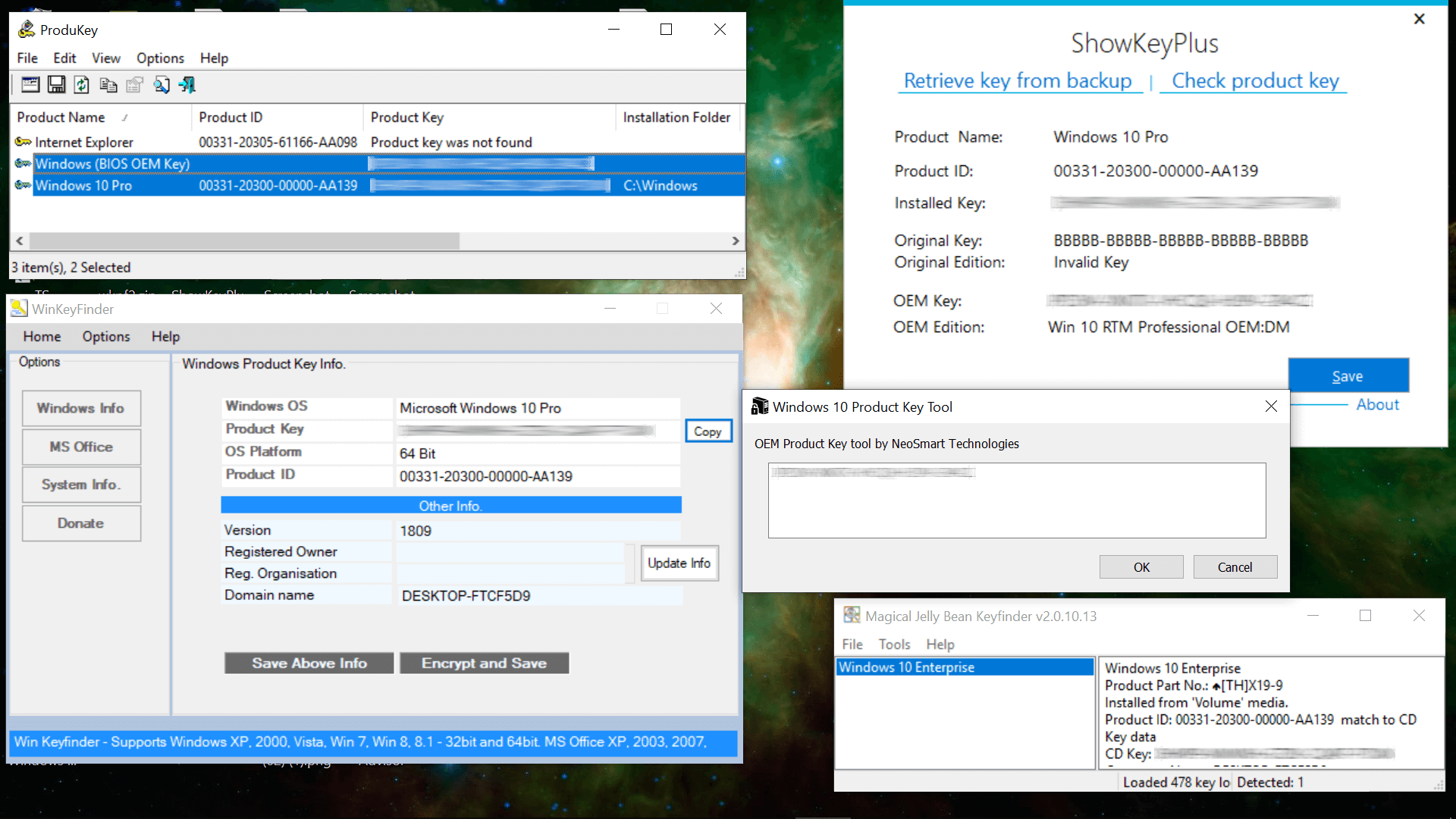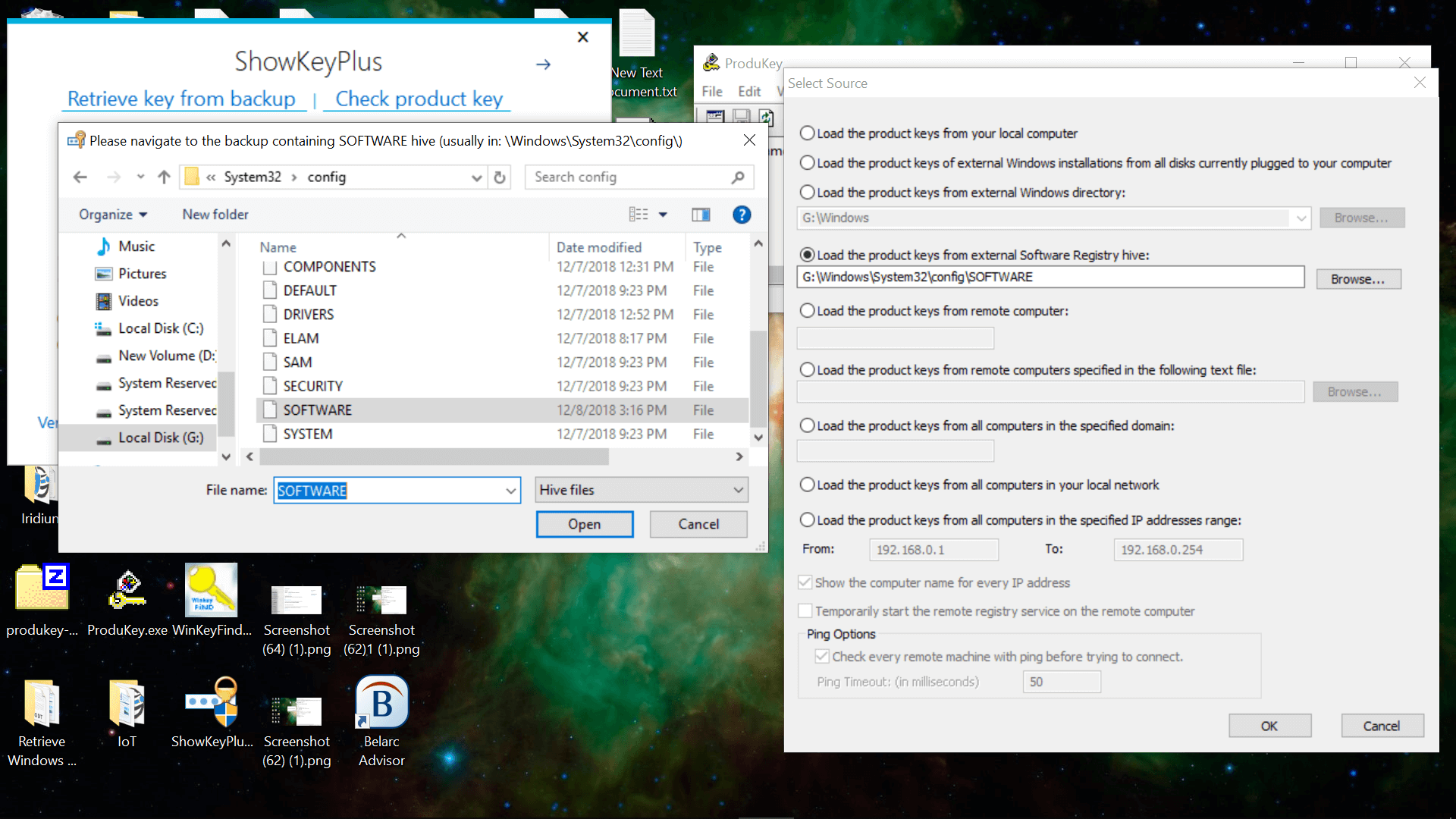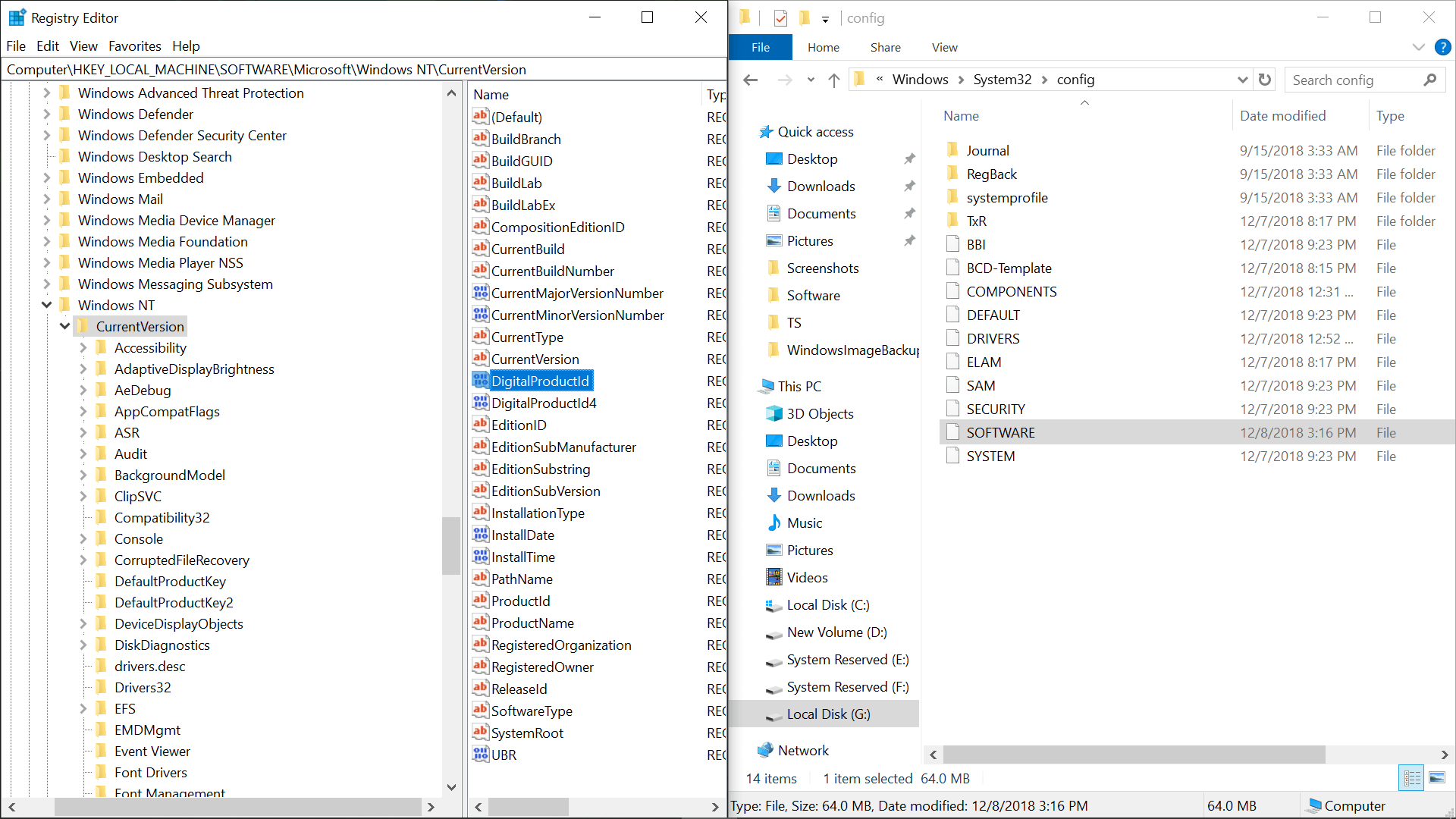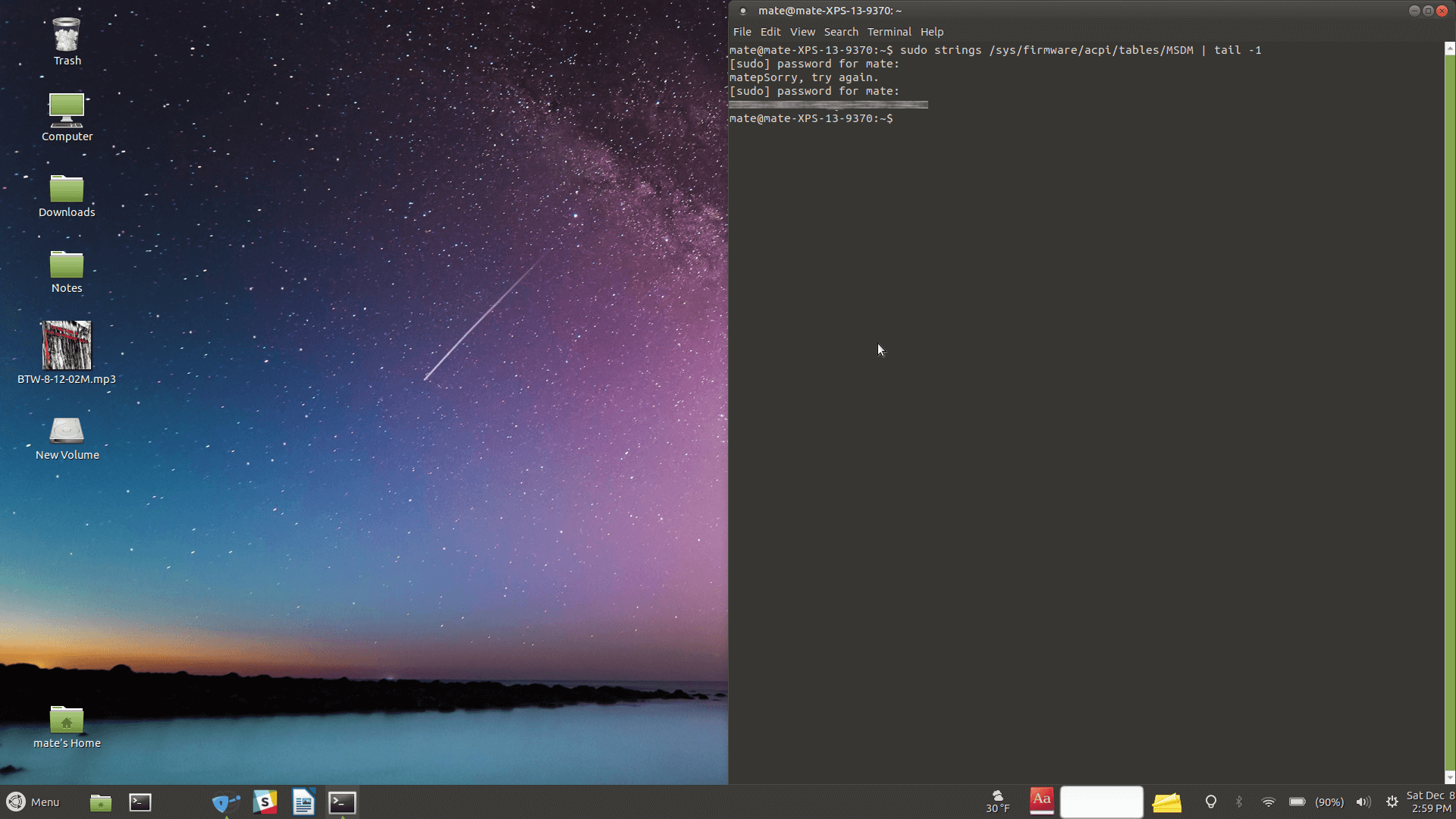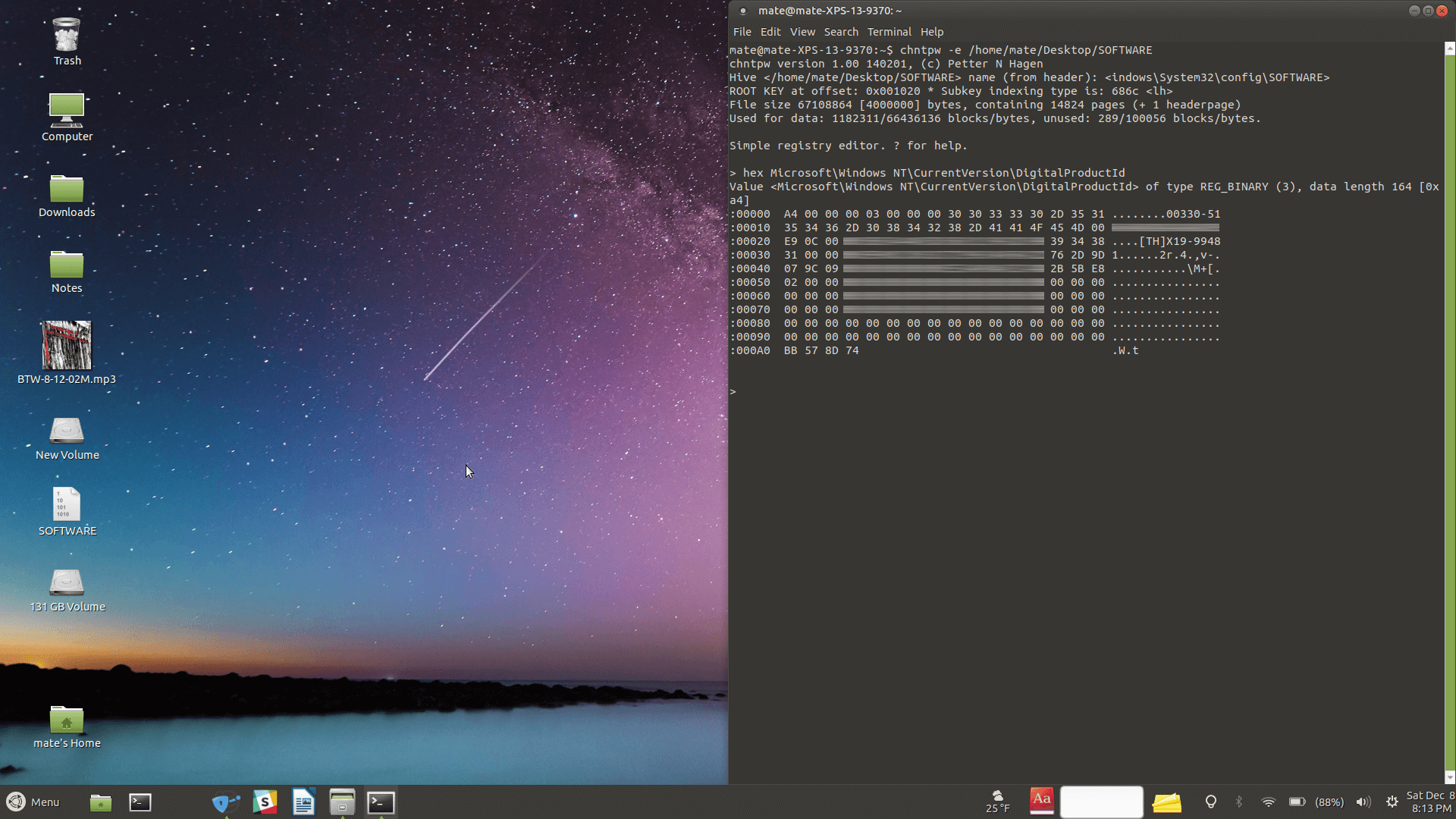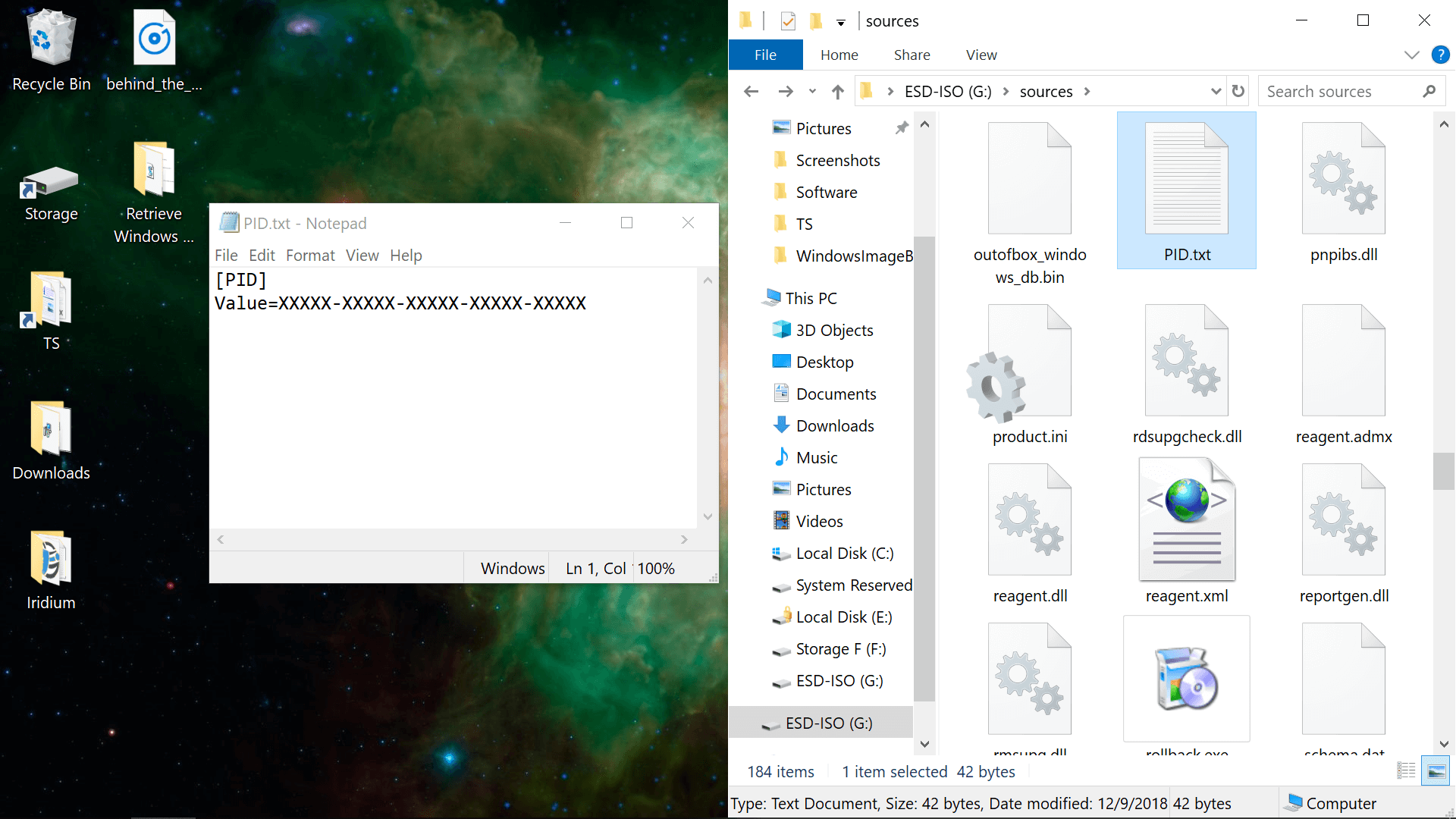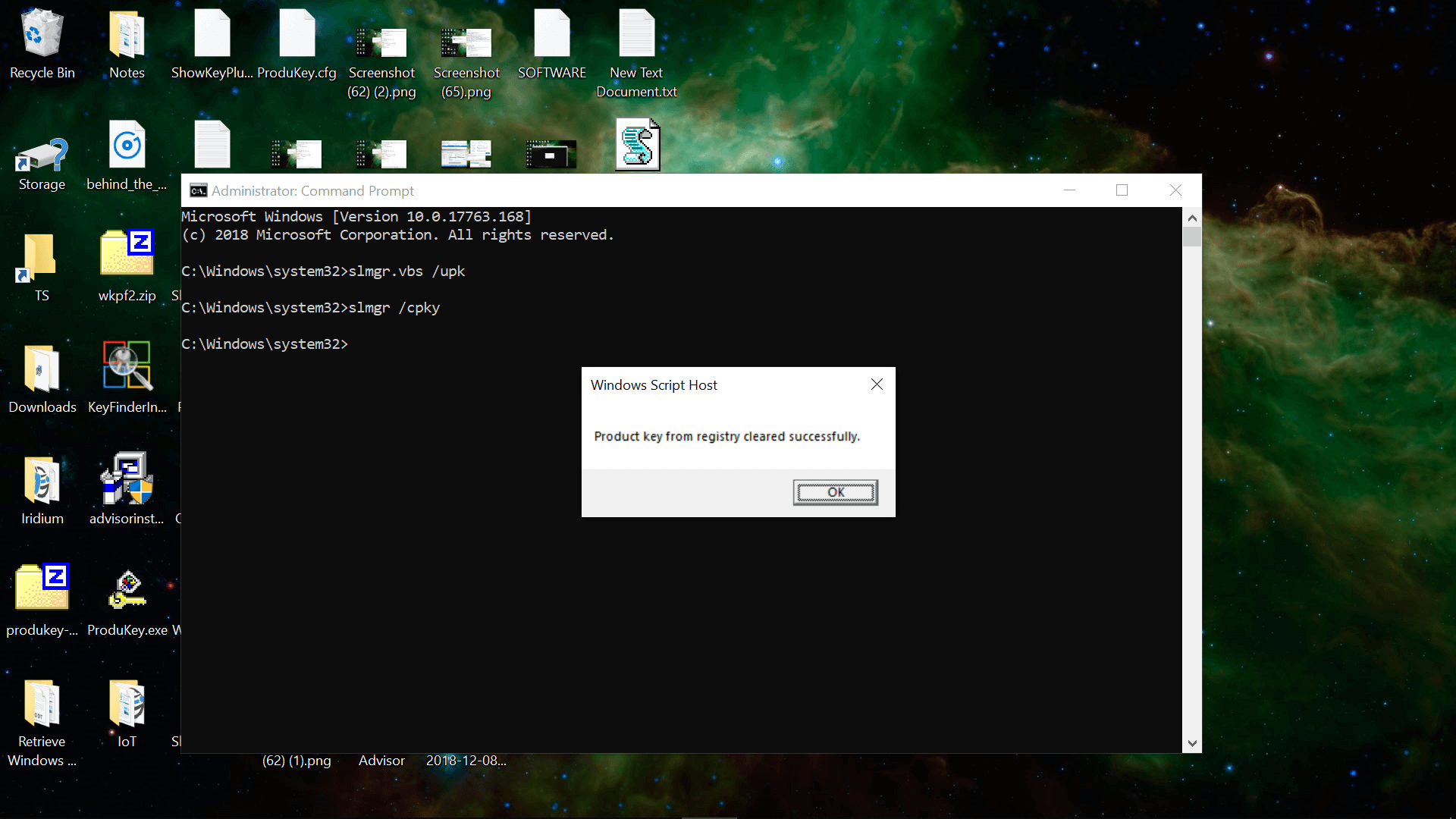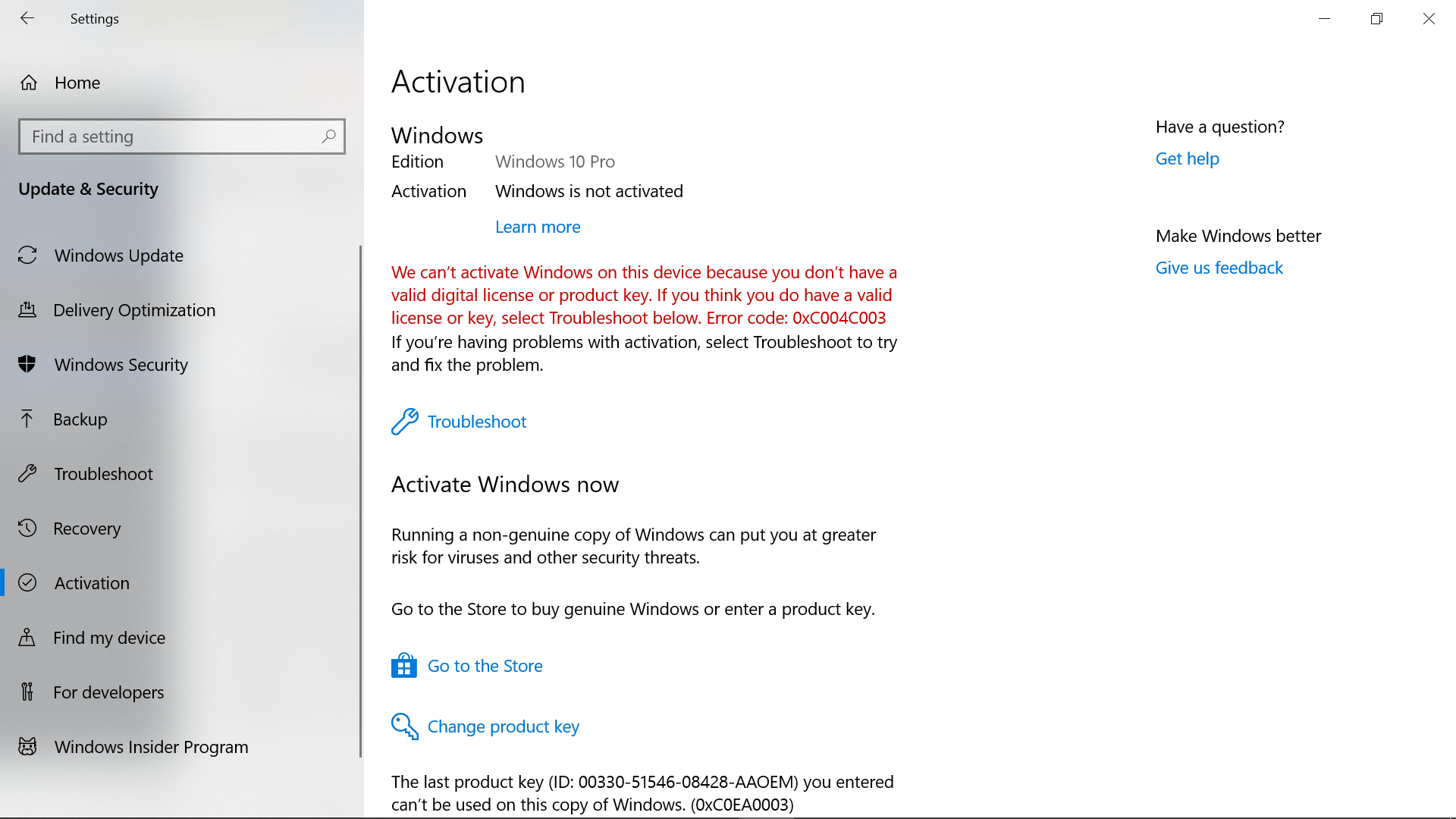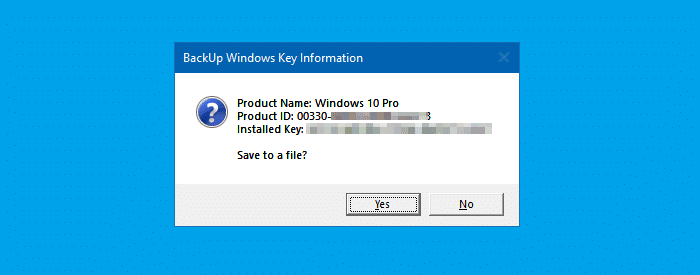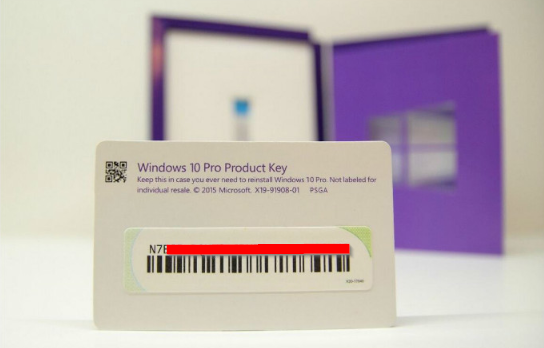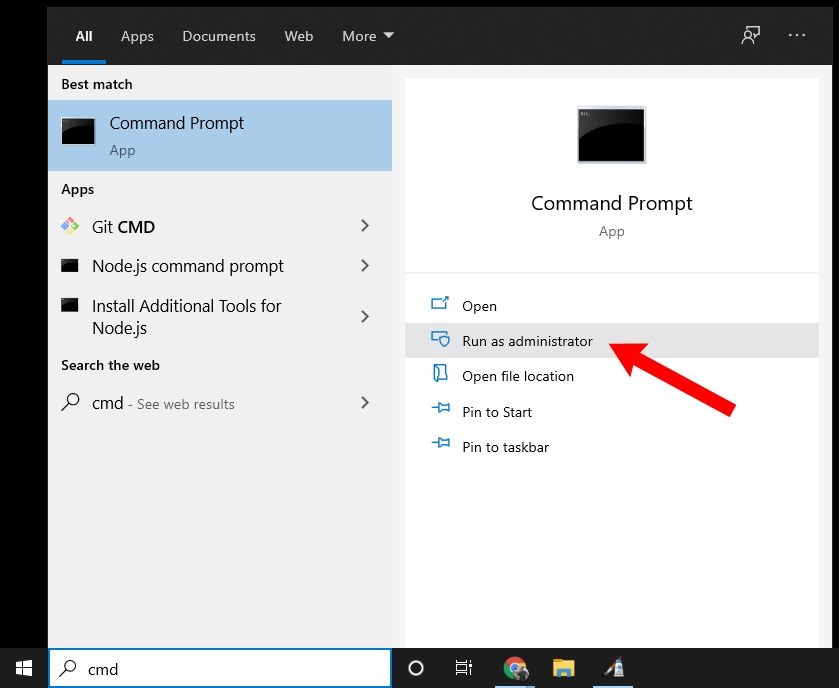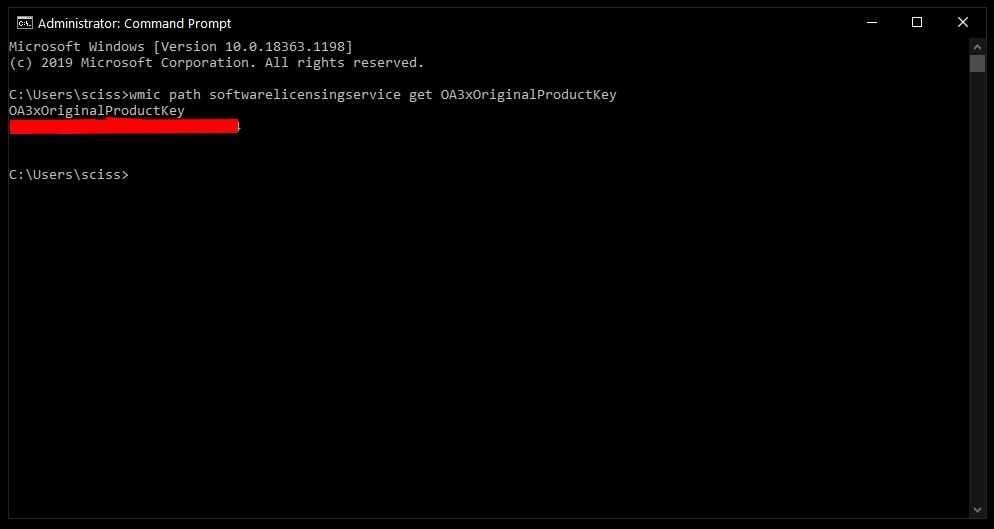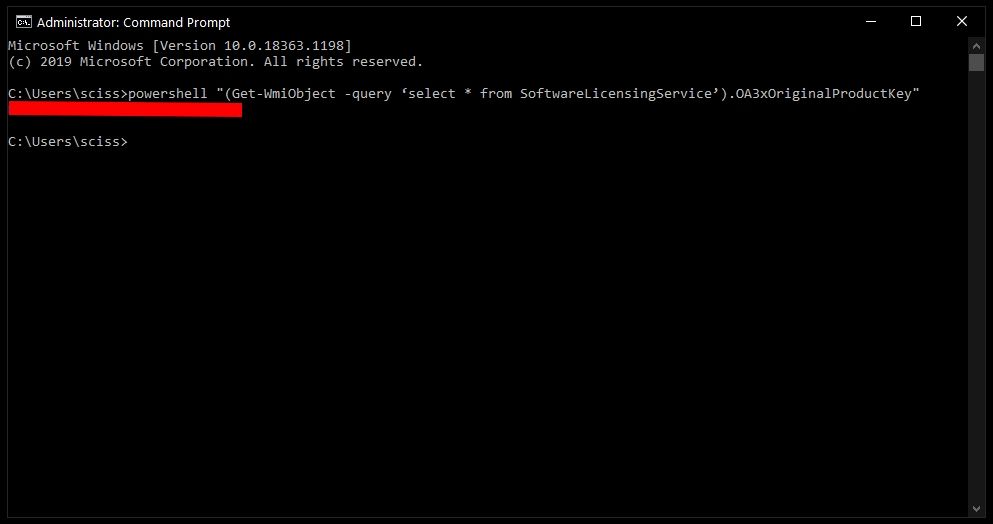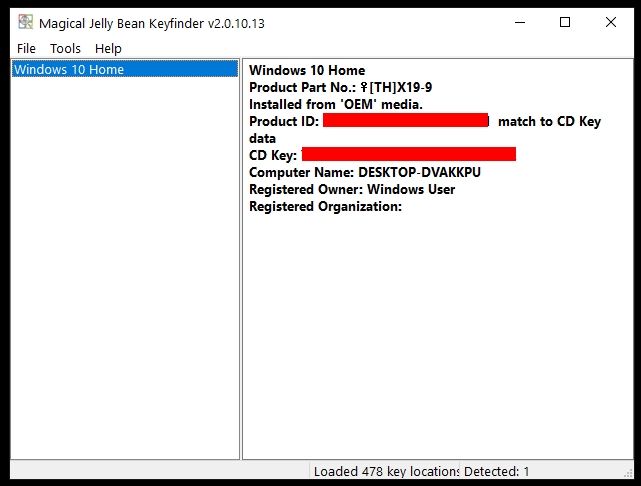Windows 11 Windows 10 Windows 8.1 Windows 7 Microsoft account dashboard More…Less
A Windows product key is a 25-character code used to activate Windows. It looks like this:
-
PRODUCT KEY: XXXXX-XXXXX-XXXXX-XXXXX-XXXXX
Locate your product key for Windows 10 or Windows 11
Depending on how you got your copy of Windows 10 or Windows 11, you’ll need either a 25-character product key or a digital license to activate it. A digital license (called a digital entitlement in Windows 10, Version 1511) is a method of activation in Windows 10 and Windows 11 that doesn’t require you to enter a product key. Without one of these, you won’t be able to activate your device.
Where to find your product key depends on how you got your copy of Windows.
Select any of the following to see more information:
The product key is preinstalled on your PC, included with the packaging the PC came in, or included on the Certificate of Authenticity (COA) attached to the PC. For more info, contact your hardware manufacturer, and for pictures of authentic product keys and COA labels, see How to tell your hardware is genuine.
The product key is on a label or card inside the box that Windows came in. For more info, contact the retailer that sold you Windows 10 or Windows 11. How to tell your software is genuine.
Find your product key in the confirmation email you received after buying Windows 10 or Windows 11 in a digital locker accessible through the retailer’s website.
The product key is in the confirmation email you received after buying your digital copy of Windows. Microsoft only keeps a record of product keys if you purchased from the Microsoft online store. You can find out if you purchased from Microsoft in your Microsoft account Order history.
If you upgraded to Windows 10 for free from Windows 7 or Windows 8.1, you should have a digital license instead of a product key.
If you bought Windows 10 or Windows 11 Pro upgrade in the Microsoft Store app, you’ll receive a digital license instead of a product key in the confirmation email that was sent to confirm the purchase. That email address (MSA) will contain the digital license. You can use the digital license for activation.
For more information about digital licenses and product keys in Windows 10 and Windows 11, see the “Methods of Activation” section in Activate Windows.
Locate your product key for Windows 7 or Windows 8.1
A product key is usually required when uninstalling or reinstalling Windows 7 or Windows 8.1. Generally, if you bought a physical copy of Windows, the product key should be on a label or card inside the box that Windows came in. If Windows came preinstalled on your PC, the product key should appear on a sticker on your device. If you’ve lost or can’t find the product key, contact the manufacturer. To ensure your product key is genuine, see How to tell your software is genuine and How to tell your hardware is genuine.
Related links
For info about how to tell if your copy of Windows is genuine Microsoft software, see the How to tell page.
Need more help?
on
April 8, 2021, 5:22 AM PDT
3 simple ways to find your Windows 10 product key
Have you lost your Windows 10 product key? You can find it listed in the operating system itself with a little know-how and just a few simple commands.

For most users, particularly with Microsoft Windows 10, the last operating system you will ever need, there has been no need for product keys because there has been no “new” version of Windows. When this article was first published in August 2021, Windows 11 was a pending release – now that it’s available, we have tips on how to find your product key in Windows 11. However, some users may still need to know their Windows 10 product key.
SEE: Checklist: Securing Windows 10 systems (TechRepublic Premium)
Your Windows 10 product key should be listed on a sticker located on your computer hardware somewhere—typically in the most inaccessible spot possible. But before you go crawling behind your desk looking for a 25-digit alphanumeric code printed in fine print on the backside of your PC, there are less strenuous ways to track down your Windows 10 product key.
This how-to tutorial shows you how to find your Windows 10 product key using the power of the operating system itself.
How to find your Windows 10 product key
Before we begin, note that the success of any of these methods is largely dependent on how your PC was activated. If you activated Windows 10 by upgrading from a valid Windows 7 or 8 installation or with the computer’s recent purchase, you are likely to find the product key with most of these methods. However, if your PC was activated as part of an organization’s licensing agreement, finding a product key may be more problematic.
SEE: 83 Excel tips every user should master (TechRepublic)
1. Command prompt
The most direct method for finding your Windows 10 product key is from the command line. Type “cmd” into the Windows 10 desktop search box and then right-click the command line result and select “run as administrator” from the context menu. Type this command at the prompt:
wmic path softwareLicensingService get OA3xOriginalProductKey
As you can see in Figure A, the command will display your current Windows 10 product key.
Figure A
2. PowerShell
If you are using Windows 10 PowerShell, the process is similar. Right-click the Start Menu button and then select Windows PowerShell (Admin) from the context menu. Type this command at the prompt to reveal the product key as shown in Figure B.
powershell "(Get-WmiObject -query 'select * from SoftwareLicensingService').OA3xOriginalProductKey"
Figure B
3. Registry File
As you might imagine, the product key is stored in the Windows 10 Registry File, so it is possible to find the code there if you know the right key. Type “regedit” into the Windows 10 desktop search and select the appropriate item in the results. Navigate to this key:
ComputerHKEY_LOCAL_MACHINESOFTWAREMicrosoftWindows NTCurrentVersionSoftwareProtectionPlatform
As you can see in Figure C, the BackupProductKeyDefault key will reveal a valid Windows 10 product key.
Figure C
Note: In my case, the Windows 10 product key displayed by both the command prompt and PowerShell methods are the same. In the registry example, however, the product keys is different. The best explanation I can suggest is that because I upgraded from Home to Pro on the example PC, the product key displayed is for the upgrade to Pro (or vice versa). If you have a better solution, please let us know in the discussion.
There are third-party vendors offering applications that can locate and display your Windows 10 product key as well, but they essentially do the same thing we did here without involving someone else’s programming and potential security issues. Also, keep in mind that if you bought Windows 10 from the Microsoft Store, your account order history would have product key information available.
Also See
-
Windows 10 PowerToys: A cheat sheet
(TechRepublic) -
How to change the registered license owner in Windows 10
(TechRepublic) -
How to activate Microsoft Defender Application Guard in Windows 10
(TechRepublic) -
Windows 10 Start menu hacks
(TechRepublic Premium) -
Must-read coverage: Windows 10
(TechRepublic on Flipboard)
-
Microsoft
-
Software
Unlike Windows 7 PCs, computers pre-installed with an edition of Windows 8 and Windows 10 don’t have a Certificate of Authenticity (CoA) sticker with their original product key printed on it. This is because, the product key is embedded in the PC’s UEFI firmware and can’t be seen just by accessing the UEFI.
While using a Windows 10 PC, you don’t need to view or backup your Windows 10 product key as we can clean install or reinstall the same edition of Windows 10 on the same PC and activate the copy of Windows 10 without having to enter the product key.
That said, there might be instances where you want to view your Windows 10 product key. May be, you want to uninstall the product key and use it on a different computer, or may be, you want to backup the product key before making substantial changes your PC’s hardware.
There are plenty of software out there to view or retrieve your Windows product key. While not all of them work great on Windows 10 and some of them out there even show a different key than the actual product key, here are three methods to view or retrieve your Windows 10 product key for free.
In the first method, we are going to use the reliable NirSoft ProduKey to view the product key. In the second method, we will use the popular Belarc Advisor software (free version) to view the product key. And a VBS script will be used in the third method to view Windows 10 key.
Method 1 of 3
Use ProduKey to View or recover Windows 10 product key
Step 1: Visit this page, scroll down to see download links, and click on the latest version of ProduKey link to download the zip file containing ProduKey. Extract the zip file to a new folder to get ProduKey.exe file.
Step 2: Run ProduKey.exe file to view your Windows 10 product key.
Method 2 of 3
View Windows 10 product key using Belarc Advisor
Step 1: Download Belarc Advisor (free) from this page and then run the installer to get it installed on your Windows 10 PC.
Step 2: Launch Belarc Advisor with administrative rights. Upon launching, the tool will automatically begin analysing your computer.
Step 3: Once the report is ready, it will be opened in your default web browser.
Step 4: On the left-side of the report (see above picture), under in page links, click Software licenses link to view your Windows 10 product key as well as product keys of other installed software.
Method 3 of 3
View Windows 10 product key using a simple script
Step 1: Click here to download Win10Key.zip file. Extract the zip file to get Win10Key.vbs file.
Step 2: Double-click on Win10Key.vbs file to view your product key.
Warning: This method is not very accurate, meaning the script might show a wrong product at times. So, we recommend you use ProduKey or Belarc Advisor over this script.
Have you backed up your Windows 10 product key?
In brief For the longest time Windows PCs came with a product key sticker that was placed outside of the machine or with your computer’s manuals. But in recent years manufacturers started storing this license within the machine’s UEFI/BIOS and the information is automatically retrieved and applied when reinstalling the operating system. Certainly a better approach overall. In other instances, for example if you built and installed your OS, your key is associated with your Microsoft account, so there is no way to «lose it» anymore. Read on for more details.
Microsoft has been changing and improving the way it handles Windows licenses. We’ll cover all you need to know in this article, from old school ways to retrieve keys, to the more modern approaches to make good use of your licenses and what restrictions may apply depending on your type of license.
Windows 10 introduced a «Digital Entitlement» element to Microsoft’s license which links your Windows key to an ID generated based on your PC’s hardware. But because your hardware can significantly change if you upgrade your hardware, this entitlement was expanded to become a «Digital License» when 2016’s Anniversary Update (1607) arrived.
This means your Windows 10 license now ties Windows keys to Microsoft accounts, letting you activate a copy of the operating system simply by logging in with valid online credentials. So, if you have a newer Windows PC or you already log in using your Microsoft account, you generally shouldn’t have to search for your original Windows 10 key. We will explain that in better detail in a minute.
There may be other scenarios where you may still want to manually find a Windows key stored in your UEFI/BIOS, or prevent this key from automatically being applied during installation. Not to mention that different conditions apply for non-OEM retail keys, as well as those given to people who upgraded to Windows 10 for free. And in a worst case scenario, you might be trying to find the license for a copy of Windows that no longer boots.
Editor’s Note: This feature was originally published on December 2018. It’s just as relevant today, so we’ve bumped it as part of our #ThrowbackThursday initiative.
Windows OEM keys vs. retail vs. free upgrade
There are many types of Windows licenses with varying terms of use. As a general rule of thumb:
- OEM keys are shipped with a specific computer and can’t be transferred to another machine. Again, these should be auto-applied from your UEFI/BIOS when reinstalling Windows on a modern boxed PC, but you can also retrieve them manually.
- Retail keys are purchased directly from Microsoft, Amazon etc. — these can be transferred to another machine and that process should happen automatically for a digital license, though you can also «uninstall» a Windows key from a given PC.
- Those who upgraded to Windows 10 for free from Windows 7 and 8 don’t have a unique Windows 10 key. This can only be transferred to one other machine (not if you upgraded from an OEM key). Free upgrade licenses are a digital entitlement.
Do I have a digital license?
The Windows 10 Settings app has a page for displaying your activation information, including whether you have a digital license, though your key isn’t shown here:
Go to: Settings > Update & Security > Activation
If you have a digital license, you should see «Windows is activated with a digital license» or «Windows is activated with a digital license linked to your Microsoft account.»
You can also link a Microsoft account to a Windows license by clicking «add a Microsoft Account» on the bottom of the same page and providing your login information.
Find your key from inside Windows
Entering the following lines into an admin Command Prompt or PowerShell worked to display the OEM key embedded in our system’s UEFI/BIOS. However, these commands didn’t return any keys on other two machines we used for testing despite Windows 10 being activated.
wmic path softwarelicensingservice get OA3xOriginalProductKey
or
powershell «(Get-WmiObject -query ‘select * from SoftwareLicensingService’).OA3xOriginalProductKey»
There’s also a commonly cited Visual Basic script that retrieves registry-based Windows keys (not those stored in the UEFI/BIOS). You can download the script here. Copy this text and paste it into Notepad, saving it as a .vbs file. Then double-click to launch the file.
We downloaded a variety of utilities that can retrieve retail keys from the Windows registry as well as those that are UEFI/BIOS-bound. In testing, some of the applications found both the registry and UEFI/BIOS keys, while others only worked for one or the other:
Nirsoft ProduKey — Found both the embedded OEM key as well as the retail key from our currently running copy of Windows. Also includes keys for many other applications such as Microsoft Office and Adobe products (strangely, Internet Explorer was also included in our results, though no key was provided). As with some of the other tools on this list, ProduKey can load Windows keys from external sources/drives.
ShowKey Plus — This utility also found both our retail and OEM keys, and can load the SOFTWARE hive file from another Windows installation.
Windows 10 Product Key Tool — Made by the developer of EasyBCD, this tool located our UEFI OEM key but didn’t find the retail license on our Windows To Go drive.
Winkeyfinder — Found our retail key but Dell’s UEFI OEM key wasn’t displayed.
Magical Jelly Bean KeyFinder — Returned the retail key but not the UEFI OEM key. This software can also load registry keys from Windows installations on other drives (tools > Load Hive). Listed our Windows 10 Pro install as Enterprise.
Find your key from outside Windows
If you can’t boot into Windows and want to retrieve that key, you can still access this data from an external environment such as a Windows To Go drive, or by attaching your non-booting Windows drive to another machine.
Note that if you’re recovering the key from a Windows To Go workspace, the non-booting drive with your Windows key is offline by default and will have to be enabled in Disk Management (diskmgmt.msc). Right-click the drive and set it as «online.» As mentioned above, several of the third-party tools that we already listed will let you load the registry hive file from another Windows installation.
You can also navigate to your license directly from the Windows registry (regedit via Start) though the key is not in plain text. Go to HKEY_LOCAL_MACHINESOFTWAREMicrosoftWindows NTCurrentVersion and look for «DigitalProductId» in the right panel.
This registry hive is stored in a file on your OS drive at WindowsSystem32Config — look for the file named SOFTWARE.
In testing, both ProduKey and ShowKey Plus loaded the SOFTWARE hive file and displayed the key for an external Windows installation via Windows To Go. Also note that ProduKey can search for Windows keys on computers at remote domains among other locations, and that the Windows Registry Editor can load hive files from other installations:
- Open the Windows Registry Editor (enter regedit via Start)
- Click HKEY_LOCAL_MACHINE so it’s selected
- Click File > Load Hive and navigate to the SOFTWARE file in WindowsSystem32Config on your other drive
- Enter a name for this external hive file
- The hive should appear as a sub-entry in HKEY_LOCAL_MACHINE
- To unload the hive, select the name you chose and go to File > Unload Hive
Retrieving the UEFI/BIOS-bound Windows key via Linux was as simple as entering the following line in a terminal, though we couldn’t find any GUI applications like ProduKey or ShowKey Plus that would retrieve the license from a registry hive file:
sudo strings /sys/firmware/acpi/tables/MSDM | tail -1
The command-line tool Chntpw can be installed on Linux and is able to load Windows registry files. This software didn’t return a valid key when decoding the product ID within the tool, though if you had to you could extract the hex data and decode that elsewhere.
If you have a boot disc around, Chntpw (also known as Offline NT Password & Registry Editor) is part of many all-in-one recovery solutions such as Ultimate Boot CD and Hiren’s Boot CD.
Here’s how to load a Windows registry file in Chntpw from a Linux terminal and then display the hex value for the key in that hive (use dpi instead of hex to decode the key within chntpw, though again, this didn’t give us a valid key):
chntpw -e YourDrive/Windows/System32/config/SOFTWARE
hex MicrosoftWindows NTCurrentVersionDigitalProductId
Additional resources
Although it’s convenient to have your Windows key automatically detected from the UEFI/BIOS, you’ll have to tweak the Windows installation media if you want to use another license.
Open the installation media in File Explorer, browse to the Sources folder and create a new text file named PID.txt in the Sources folder. In PID.txt, you want the following text, where the Xs correspond to your license key.
[PID]
Value=XXXXX-XXXXX-XXXXX-XXXXX-XXXXX
Uninstalling a retail key from a given machine is also possible and while this doesn’t automatically update the information on Microsoft’s servers, it will prevent future conflicts from multiple machines using the same key.
Enter the following line in an administrator Command Prompt to uninstall the currently active product license and clear that key from the Windows registry (here are more slmgr commands):
slmgr.vbs /upk
slmgr /cpky
As a final anecdote from testing, when we uninstalled and cleared the key from our Windows installation, we were able to reactivate that copy of Windows simply by clicking «Troubleshoot» on the activation page.
One click and that wizard retrieved our digital license, despite not being linked to a Microsoft account. And again, this was for a retail key that was originally used on a desktop which was cloned as a Windows To Go drive and plugged into another machine with a different hardware profile. In other words, with luck, Microsoft’s activation is forgiving enough and you should have no issues validating your OS license on a new machine or after several hardware changes.
Keep Reading. Software at TechSpot
- Ways to Free Up Storage Space on Windows
- Windows To Go: How to Install and Run Windows 10 from a USB Drive
- «Run as Administrator»: What Does It Mean?
- A Compilation of Command Prompt Tips, Tricks & Cool Things You Can Do
There are many tools to extract the Product Key from a live system or from the registry hive of an offline computer. Additionally, here is a neat little Vbscript that gets the Product Key of your current Windows installation–no third-party program required. The script works on Windows 7, 8 and Windows 10.
Method 1: Using WMI command-line or PowerShell
Use the following WMI command-line to fix the product key of your Windows installation.
wmic path softwarelicensingservice get OA3xOriginalProductKey
This method retrieves the activation key stored in the UEFI/BIOS of your computer.
Note that you’ll need to run the above command from an elevated/admin Command Prompt window.

Or, if you’re using PowerShell, run this command from an admin PowerShell window to know the product key:
(Get-WmiObject -query 'select * from SoftwareLicensingService').OA3xOriginalProductKey
In some systems, the above commands would output the caption OA3xOriginalProductKey and blank rows beneath, showing no product key. This happens if the device doesn’t have an embedded activation/product key.
If the device has a firmware-embedded activation key, it will be displayed in the output. If the output is blank, the device does not have a firmware embedded activation key. Most OEM-provided devices designed to run Windows 8 or later will have a firmware-embedded key.
Method 2: Using Script
Important: Note that the following method simply decodes the DigitalProductId registry value to get the retail product key. The key retrieved using this method could either be the auto-generated generic Windows 10 key (for systems upgraded from Windows 7 or 8 under digital entitlement). It could also be the retail edition key (if you bought the license earlier) you entered manually during Windows 10 setup. So, if you’re using Windows 10, it’s advisable to give priority to the 1st method.
Copy the following code to Notepad and save the file as GetProductKey.vbs.
Option Explicit
Dim objshell,path,DigitalID, Result
Set objshell = CreateObject("WScript.Shell")
'Set registry key path
Path = "HKLMSOFTWAREMicrosoftWindows NTCurrentVersion"
'Registry key value
DigitalID = objshell.RegRead(Path & "DigitalProductId")
Dim ProductName,ProductID,ProductKey,ProductData
'Get ProductName, ProductID, ProductKey
ProductName = "Product Name: " & objshell.RegRead(Path & "ProductName")
ProductID = "Product ID: " & objshell.RegRead(Path & "ProductID")
ProductKey = "Installed Key: " & ConvertToKey(DigitalID)
ProductData = ProductName & vbNewLine & ProductID & vbNewLine & ProductKey
'Show messbox if save to a file
If vbYes = MsgBox(ProductData & vblf & vblf & "Save to a file?", vbYesNo + vbQuestion, "BackUp Windows Key Information") then
Save ProductData
End If
'Convert binary to chars
Function ConvertToKey(Key)
Const KeyOffset = 52
Dim isWin8, Maps, i, j, Current, KeyOutput, Last, keypart1, insert
'Check if OS is Windows 8
isWin8 = (Key(66) 6) And 1
Key(66) = (Key(66) And &HF7) Or ((isWin8 And 2) * 4)
i = 24
Maps = "BCDFGHJKMPQRTVWXY2346789"
Do
Current= 0
j = 14
Do
Current = Current* 256
Current = Key(j + KeyOffset) + Current
Key(j + KeyOffset) = (Current 24)
Current=Current Mod 24
j = j -1
Loop While j >= 0
i = i -1
KeyOutput = Mid(Maps,Current+ 1, 1) & KeyOutput
Last = Current
Loop While i >= 0
If (isWin8 = 1) Then
keypart1 = Mid(KeyOutput, 2, Last)
insert = "N"
KeyOutput = Replace(KeyOutput, keypart1, keypart1 & insert, 2, 1, 0)
If Last = 0 Then KeyOutput = insert & KeyOutput
End If
ConvertToKey = Mid(KeyOutput, 1, 5) & "-" & Mid(KeyOutput, 6, 5) & "-" & Mid(KeyOutput, 11, 5) & "-" & Mid(KeyOutput, 16, 5) & "-" & Mid(KeyOutput, 21, 5)
End Function
'Save data to a file
Function Save(Data)
Dim fso, fName, txt,objshell,UserName
Set objshell = CreateObject("wscript.shell")
'Get current user name
UserName = objshell.ExpandEnvironmentStrings("%UserName%")
'Create a text file on desktop
fName = "C:Users" & UserName & "DesktopWindowsKeyInfo.txt"
Set fso = CreateObject("Scripting.FileSystemObject")
Set txt = fso.CreateTextFile(fName)
txt.Writeline Data
txt.Close
End Function
Source: Retrieve Windows Product Key · GitHub
Double-click to run the script to find out the Product Key of your Windows installation.
That’s it!
One small request: If you liked this post, please share this?
One «tiny» share from you would seriously help a lot with the growth of this blog.
Some great suggestions:
- Pin it!
- Share it to your favorite blog + Facebook, Reddit
- Tweet it!
So thank you so much for your support. It won’t take more than 10 seconds of your time. The share buttons are right below. 
It is an undeniable fact that one cannot activate Windows 10 on his PC without having the digital license or the 25-digit product key. So, the question is «How to view Windows 10 product key?» First of all, you must understand that the location of the product key varies from PC to PC. Those who buy their PC with pre-installed Windows 10 have the product key placed on a sticker in the PC’s box, and then some have it at the downside of their device. On the other hand, people who want to upgrade from Windows 8.1 to 10, well they have to buy the product key online. In short, the product key is quite necessary for someone who wants to activate Windows 10. There are a couple of strategies that can help you to view Windows 10 product key for the activation.
Method 1. View Windows 10 Product Key with Windows Registry
The least difficult technique and one of the best to recoup your Window 10 product key is to go to your Windows Registry. And in order to do that, you have to follow the following steps:
- Use the backup course of action key «Windows+R» to open the «Run.»
- Following the above step, the Windows registry will then open before you when you write «regedit» in the Run section and hit enter.
- At this point, you need to search the DigitalProductID by entering:
HKEY_LOCAL_ MACHINESOFTWAREMicrosoftwindows NTCurrentversion
After following these steps, you will see your product key before your screen. Now, you may require some assistance from an outsider remembering the ultimate objective to scrutinize your product key since you won’t have the ability to examine it normally without anyone’s help.
Method 2. View Windows 10 Serial Key on the Sticker
In case, you have purchased your PC from a Microsoft retailer, there is a very good possibility of having your Windows 10 product key on a sticker that is generally present inside the box in which your PC came. However, in case, you cannot locate your key inside the box, then try to check the posterior of your PC or the downside of your PC, your product key might be engraved on a sticker there.
Method 3. View Windows 10 Activation Key from Your Email
In case, you have obtained your Windows 10 online, then, your license key might be sent to you by means of email. Also, it’s better to check the junk and spam folder of your account in case you can’t find the mail through which the product key of your Window 10 was sent. And if you still cannot locate the key, then you should contact the retailer from which you purchased Windows 10 product key.
Method 4. View License Key with UEFI Firmware
Check your PC’s UEFI or BIOS, which is another extraordinary method to recoup your product key. In that way, if you ever install or reinstall a similar version of Windows 10 on your PC by then, there is a possibility that you won’t need to enter any product key normally because, in such circumstances, the PC automatically detects your previous product key and authorizes Windows 10 installation.
Method 5. Show Windows 10 Product Key Using Command Prompt
This is the most essential approach in order to get your Windows 10 product key. All you need to do is to start up the Command Prompt window with the administrative purposes. In order to do that, simply search for CMD in the Windows search bar, then right-click on it and select «Run as administrator.» Once you have a Command Prompt Window open before you, simply type the command:
wmic path softwarelicensingservice get OA3xOriginalProductKey and after that hit «Enter» to see your Windows 10 product key.
Method 6. View Windows 10 Product Key with PassFab Product Key Recovery
If you’ve tried all the above-mentioned ways to find your product key and still did not succeed in your conquest of finding Windows 10 product key or you think you’ve lost it, then don’t worry because there is a way out to every problem. PassFab Product Key Recovery is the only solution to a lost Windows 10 product key. This software is so far the best software that can help you recover your key within no time. Moreover, the best part is that with PassFab Product Key Recovery you don’t have to get into any technicalities because this software is pretty easy to use. All the instructions are already given on their site, you just have to follow them, and you’ll get your key right on your screen.
Here are the steps to show your lost Windows 10 product key using PassFab Product Key Recovery:
Step 1. First of all, you have to download this key finder and then install it on your computer by following the instructions.
Step 2. Now, click on the button that says «Get Key,» and then the software will automatically detect all the product key information and show it on your screen.
Step 3. Click on the option that says «Generate text,» and a window will pop up in front of you where you can save the product keys into a txt file.
Step 4. Save the file on your desktop.
Step 5. You can now open the file and get your Windows 10 update key.
Conclusion
We hope you now understand that why exactly is it so important to have a product key for Windows 10. Now, if you want to activate Windows 10 on your PC right away then don’t waste any further time and use the above-mentioned methods to view your Windows 10 product key. However, if nothing works for you, then just use the PassFab Product Key Recovery to get your key recovered. Right now around more and more people have downloaded this software, and almost all of them are fully satisfied with the results with which it comes. The best part again about PassFab Product Key Recovery is that it’s easy to use so yes, you should definitely give this one a try.
Run Command Prompt as administrator, type “wmic path softwarelicensingservice get OA3xOriginalProductKey” into Command Prompt, and then hit Enter to find your Windows 10 product key. The command will only display a product key if your computer came with Windows 10 pre-installed.
If you’re looking for your Windows 10 product key, you can find it by entering a quick command in the Command Prompt. Here’s how—plus a neat little trick for finding the product key using a Windows Registry method.
To find your Windows 10 product key using the Command Prompt, you’ll need to open the command line application with administrative privileges. To do this, type “cmd” in the Windows search bar.
Command Prompt will appear in the search results. Right-click it and select “Run As Administrator” from the window that appears. If prompted, enter your Windows account password.
Once open, copy and paste the following command and then hit the Enter key:
wmic path softwarelicensingservice get OA3xOriginalProductKey
The 25-digit product key will then appear.
This method displays the Windows product key stored in your computer’s BIOS or UEFI firmware. In other words, it shows the original Windows key your computer came with. If you’ve installed Windows with a different key since then (or acquired a digital license), it will be different from the current key in use on your PC. If you want the current key in use on your PC, NirSoft’s ProduKey or ShowKeyPlus from the Microsoft Store are good graphical tools for finding it.
Note: NirSoft’s ProduKey will probably trigger your antivirus. Because of what ProduKey does — and how it does it — your antivirus thinks it is or could be malicious. As long as you download it from the official site, you don’t have to worry about it. Nirsoft has had a good reputation for a very long time.
That’s all there is to it. This way is quick, but this isn’t likely a code you’ll remember very easily. If you’d like a faster way of accessing your product key in the future, you can use the Windows Registry method instead.
RELATED: How to Find Your Windows 11 Product Key
Find Your Windows 10 Product Key Using a Windows Registry Method
Update: This method is all over the web, but it doesn’t seem to return a real usable key on the latest version of Windows 10. (For example, this script in Microsoft’s TechNet gallery works differently, but also grabs output from “DigitalProductId” in the registry.) As of July 2020, we recommend you skip this section and use the above method instead.
The Windows Registry tip was initially posted by a user (whose account is no longer active) in the Microsoft forum.
First, open Notepad by right-clicking anywhere on the desktop, hovering over “New,” and then selecting “Text Document” from the menu.
Copy and paste this code into Notepad:
Set WshShell = CreateObject("WScript.Shell")
MsgBox ConvertToKey(WshShell.RegRead("HKLMSOFTWAREMicrosoftWindows NTCurrentVersionDigitalProductId"))
Function ConvertToKey(Key)
Const KeyOffset = 52
i = 28
Chars = "BCDFGHJKMPQRTVWXY2346789"
Do
Cur = 0
x = 14
Do
Cur = Cur * 256
Cur = Key(x + KeyOffset) + Cur
Key(x + KeyOffset) = (Cur 24) And 255
Cur = Cur Mod 24
x = x -1
Loop While x >= 0
i = i -1
KeyOutput = Mid(Chars, Cur + 1, 1) & KeyOutput
If (((29 - i) Mod 6) = 0) And (i <> -1) Then
i = i -1
KeyOutput = "-" & KeyOutput
End If
Loop While i >= 0
ConvertToKey = KeyOutput
End Function
Next, click the “File” tab and select “Save As.”
In File Explorer, set the “Save As Type” dropdown to “All Files” and give your file a name. You can use any name, but it has to be a .vbs file. You can name it something like: productkey.vbs
Once you’ve entered a file name, save the file.
You can now view your Windows 10 product key at any time by opening the new file.
READ NEXT
- › How to Find Your IP Address From CMD (Command Prompt)
- › How to Change Your Age on TikTok
- › PSA: You Can Email Books and Documents to Your Kindle
- › The New HP Pro x360 Fortis Is a 2-In-1 Laptop Under $500
- › This Huge Curved Ultrawide Monitor From LG Is $337 Today
- › Get PC Power With Tablet Portability in the Surface Pro 9 for $200 Off
- › How to Screen Record on iPhone
How-To Geek is where you turn when you want experts to explain technology. Since we launched in 2006, our articles have been read billions of times. Want to know more?
If you’re having trouble finding your Windows 10 product key, we’ve got you covered.
In this quick tutorial we’ll go over what a Windows product key is, and I’ll share several ways to find the product key on modern Windows machines.
A Windows product key or license is a 25 digit code used to activate your installation of Windows.
Back in the day, all you had to do to find your Windows product key was look for a sticker somewhere on the machine.
Usually you could find the sticker on the side of a desktop PC, or stuck to the bottom of a laptop:
Or if you bought a physical copy of Windows, your product key would be included somewhere in the box:
These days, if you buy a Windows 10 Home or Pro from the Microsoft Store or another online retailer like Amazon, it’ll include a digital copy of your product key.
But if your computer is relatively new and came with Windows preinstalled, you might be wondering how to find your key – there’s likely no sticker on the machine, and the computer manufacturer probably didn’t include one in the box.
Whether you installed and activated Windows yourself, or it came preinstalled, your product key is stored in the BIOS. This makes it really easy if you ever want to reinstall or upgrade Windows – there’s no sticker on the machine that could get damaged, and no small label to lose.
Still, there are times when you might need your product key, like if you want to transfer a Windows Home or Pro license to another machine.
Whatever the reason, here are a few ways to get your Windows 10 product key.
How to get your Windows 10 product key with the Command Prompt
If you want to get your product key from Windows, the easiest way is to do that is through the Windows Command Prompt.
First, press the Windows key, search for «cmd», and click on «Run as administrator»:
Then, run the following command:
wmic path softwarelicensingservice get OA3xOriginalProductKeyAfter that, you’ll see your Windows 10 product key:
Alternatively, you can run this command in the Command Prompt terminal:
powershell "(Get-WmiObject -query ‘select * from SoftwareLicensingService’).OA3xOriginalProductKey"Both of these commands attempt to read your Windows product key from something called the OA3 BIOS marker. In other words, they may only work if Windows came preinstalled, and not if you built the machine yourself and installed/activated Windows.
If your product key isn’t saved to your BIOS/UEFI for some reason, then these commands will either throw an error or return an empty string. In this case, or if you prefer a GUI, give the next method a try.
How to get your Windows 10 product key with a third-party program
There are a few tools out there like Belarc Advisor or Magical Jelly Bean KeyFinder that can detect your Windows product key.
We’ll use Magical Jelly Bean KeyFinder for this tutorial because, well – come on, that name, right?
All you have to do is download and install Magical Jelly Bean KeyFinder. Then open the KeyFinder program to see your product key:
Once you’ve copied your product key somewhere safe, feel free to uninstall Magical Jelly Bean KeyFinder.
So those are some quick ways to find your Windows 10 product key.
Did any of these methods or programs work for you? Did you find another way to get your product key? Let me know over on Twitter.
Learn to code for free. freeCodeCamp’s open source curriculum has helped more than 40,000 people get jobs as developers. Get started

